Overview of artillery. Part of 6. Ammunition
Guided munitions entered relatively late in history howitzers, because it uses electronics, which should be resistant not only to the crushing effect of the shot, but also to the destructive torsion forces created by the rifling system. In addition, receivers that are capable of quickly catching GPS signals at the exit from the muzzle and withstanding enormous loads must also be invented.
The US Army tested Excalibur guided missiles in real combat by shooting it with M109A5 Paladin and M777A2 howitzers (in the photo)
The first XM982 Excalibur projectile shot was fired in May 2007 near Baghdad from the M109A6 Paladin howitzer. This munition was developed by Raytheon in conjunction with BAE Systems Bofors and General Dynamics Ordnance and Tactical Systems. Directly behind the multi-mode nasal fuse, it has a GPS / INS guidance unit (satellite positioning system / inertial navigation system), followed by a control compartment with four forward-facing rudders, then a multifunctional warhead and, finally, in the tail section of the projectile are placed bottom gas generator and rotating stabilizing surfaces.
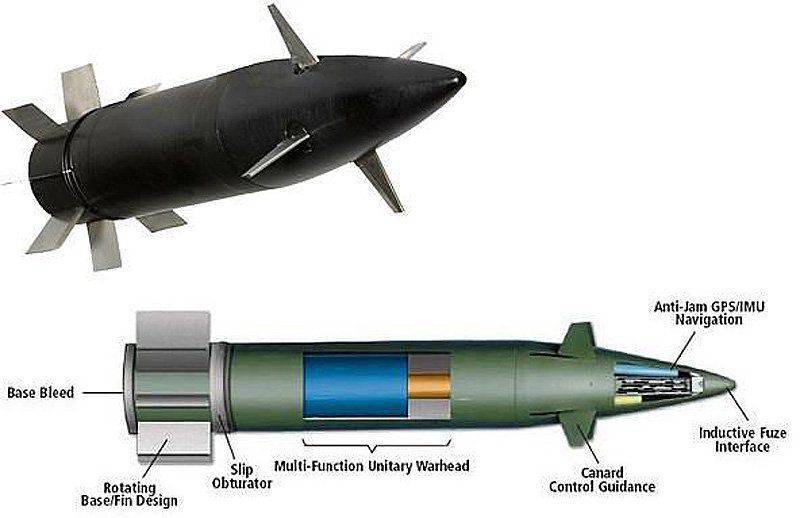
Projectile Excalibur
At the ascending part of the trajectory, only inertial sensors work, when the projectile reaches its highest point, the GPS receiver is activated and after a moment the nose handles are revealed. Further, according to the coordinates of the target and flight time, flight is optimized on the middle segment of the trajectory. Nasal rudders allow not only to send a projectile at the target, but also create sufficient lift force, providing a controlled flight path different from the ballistic one and increasing the firing range in comparison with standard ammunition. Finally, in accordance with the type of warhead and the type of target, the trajectory is optimized in the final stage of the projectile’s flight. Ammunition of the first version of Increment Ia-1, used in Iraq and Afghanistan, did not have a bottom gas generator and their range was limited to 24 km. Advanced data showed 87% reliability and accuracy less than 10 meters. After adding a bottom gas generator, the shells of the Increment Ia-2 version, also known as M982, could fly more than 30 km. However, problems with the reliability of the MACS 5 propelling charges (Modular Artillery Charge System - the system of modular artillery charges) limited their range; In Afghanistan, in 2011, Excalibur shells were fired with 3 and 4 charges. The harsh criticism of these first Excalibur projectiles was associated with their high cost, which also reduced the purchase of Ia-2 shells from 30000 to 6246 pieces.
The gunners of the American army are ready to make a shot with an Excalibur projectile. Option Ib has been in production since April 2014, not only cheaper than its predecessors, but also more accurate.
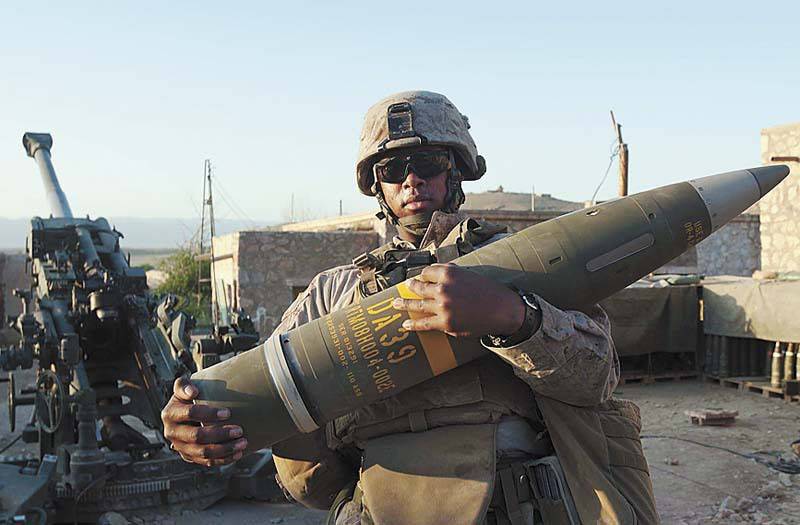
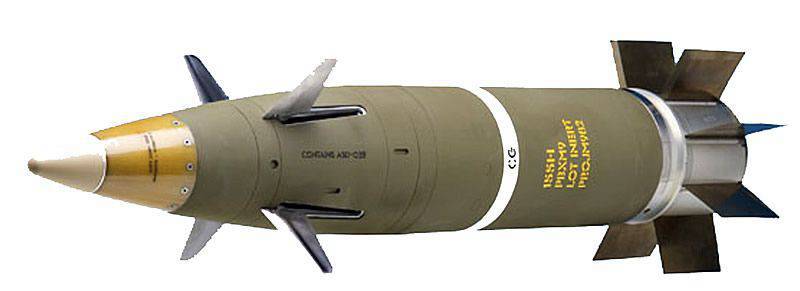
Excalibur Ib, currently commercially available, is ready to enter the foreign market. A version of this laser-guided projectile is being developed.
Since 2008, the US Army has been striving to increase reliability and reduce the cost of a new ammunition, and therefore issued two design and development contracts. In August, 2010 of the year she chose Raytheon to fully refine and manufacture the Excalibur Ib projectile, which in April 2014 of the year replaced the Ia-2 version on Raytheon production lines and is currently in production. According to the company, its value has been reduced by 60% while improving performance; Acceptance tests showed that 11 shells dropped an average of 1,26 meters from the target and 30 shells dropped an average of 1,6 meters from the target. In total, 760 combat shots were fired by this projectile in Iraq and Afghanistan. Excalibur has a multimode fuse, programmable as a shock, shock with a delay or an air blast. In addition to the US Army and Marine Corps, the Excalibur projectile is also in service with Australia, Canada and Sweden.
For the overseas market, Raytheon decided to develop an Excalibur-S projectile, which is also distinguished by a laser homing head (GOS) with the function of semi-active laser guidance. The first tests of the new version were carried out in May 2014 of the year at the Yume test site. The first stages of guidance are the same as in the main Excalibur variant, at the last stage it activates its laser homing system in order to capture the target due to the reflected coded laser beam. This allows you to direct the ammunition with great accuracy at the intended target (even a moving one) or another target within the field of view of the GOS when the tactical situation changes. For Excalibur-S, the date of entry into service has not yet been announced; Raytheon expects the launch customer to complete the development of the concept of operations, which will allow starting the qualification testing process. Raytheon used the Excalibur experience in developing 127-mm guided munitions for ship-guns, designated Excalibur N5 (Naval 5 — Marine, 5 inches [or 127 mm]), which used 70% 155-mm projectile technology and 100% its navigation and guidance systems. According to Raytheon, the new projectile will more than triple the range of the Mk45 cannon. The company also stated that its tests "allowed Raytheon to obtain the data necessary for the transition to a controlled flight test in the near future."
The MS-SGP (Multi Service-Standard Guided Projectile - Standard Guided Projectile for All Classes) BAE Systems is part of a joint program aimed at providing ship and land artillery with a long-range guided artillery munition. The new projectile caliber 5 inches (127 mm) in the ground version will be subcaliber, with a separating pallet. When creating the guidance system, the experience of developing an LNAP 155-mm projectile (Long Range Land Attack Projectile — an extended-range projectile for ground artillery) designed for firing from naval guns Advanced Gun System manufactured by BAE Systems, which are on destroyers of the Zumwalt class, was used. The guidance system is based on inertial systems and GPS, the communication channel allows you to retarget the projectile in flight (the flight time per 70 km is three minutes 15 seconds). The tests of the MS-SGP jet engine were carried out; the projectile performed a controlled flight when firing from the Mk 45 ship cannon, reaching the target at a distance of 36 km, at an angle of 86 °, and with an error of the entire 1,5 meter. BAE Systems is ready to make test shells for ground platforms; the difficulty here is to check the correct functioning of the breech with a projectile length 1,5 meter and a mass 50 kg (16,3 of them falls on the high-explosive part). According to BAE Systems, the accuracy and angle of incidence largely compensate for the reduced mortality of the sabot projectile, which also results in a reduction in indirect losses. Another major challenge for the upcoming tests is to determine the reliability of the restraint used to lock the front and rear rudders in the folded state until the projectile leaves the muzzle. It must be said that for ship guns such a problem naturally does not exist. The projectile angle of incidence that can reach 90 ° compared to 62 ° typical for ballistic projectiles allows MS-SGP to be used in “urban canyons” for hitting relatively small targets, which even more expensive weapon systems were needed to neutralize. The company BAE Systems announces the cost of the projectile significantly lower 45000 dollars. She is collecting additional test data that would clarify the maximum range of the MS-SGP guided projectile. A recent test report reported that the maximum range is 85 km when firing 39 caliber with a modular charge 4 MAC and 100 km MAC with a 5 MAC charge (which increases to 120 km when firing a 52 caliber long). As for the ship variant, it has a range of 100 km when firing from a 62 caliber gun (Mk 45 Mod 4) and a 80 km from a 54 caliber gun (Mk45 Mod 2). According to BAE Systems and the US Army, X-NUMX MS-SGP guided munitions at targets with an area of 20x400 meters can have the same effect as 600 conventional 300-mm projectiles. In addition, MS-SGP will reduce the number of artillery battalions by one third. The phased program provides further enhancement of the capabilities of the MS-SGP projectile. To this end, it is planned to install an inexpensive optical / infrared homing system so that it can destroy moving targets.
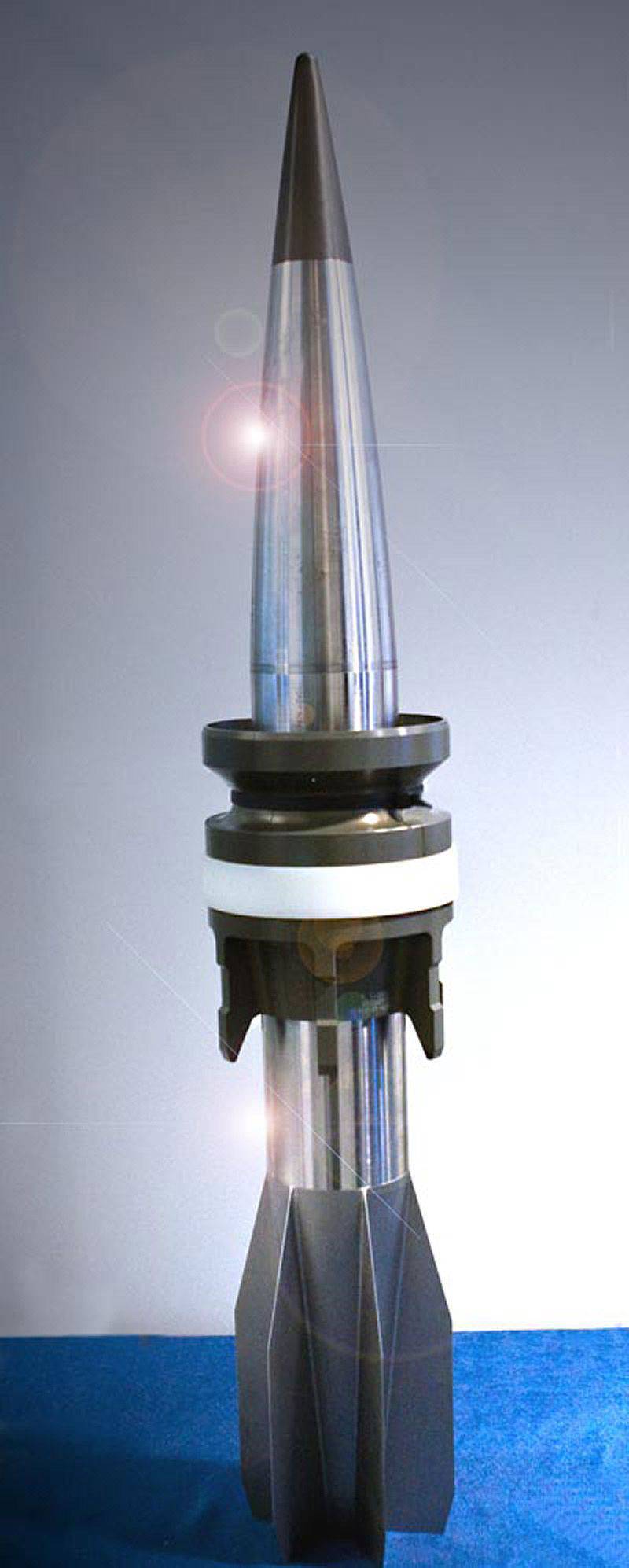
Oto Melara 155-mm Vulcano Projectile. When firing 155-mm / 52 guns, the extended-range version will have the 50 km firing range, and the controlled version - the 80 km range

The MS-SGP guided projectile is a 127-mm naval ammunition with a detachable pallet, which can also be fired from 155-mm howitzers and reach 120 km range when firing from a 52 caliber cannon.
In order to increase the range and accuracy of ground and ship guns, Oto Melara developed the Vulcano family of ammunition. In accordance with the agreement signed in 2012 between Germany and Italy, the program for these munitions is currently being implemented jointly with the German company Diehl Defense. While for ship guns, the development of a projectile caliber 127 mm and later caliber 76 mm were carried out, for ground platforms they stopped at caliber 155 mm. At the final stage of development, there are three variants of the Vulcano 155-mm projectile: unguided BER (Ballistic Extended Range) increased ammunition, guided long-range GLR (Guided Long Range) guided with INS / GPS guidance in the final trajectory section, and a third variant with laser semi-active guidance (also developed version of the GOS in the far infrared region of the spectrum, but only for the ship's artillery). Control compartment with four rudders located in the nose of the projectile. Increasing the range of action while maintaining the internal ballistics, pressure in the chamber and the length of the barrel means an improvement in the external ballistics and, as a consequence, a decrease in aerodynamic drag. The body of an 155-mm artillery projectile has a ratio of diameter to length approximately 1: 4.7. In the Vulcano sub-caliber projectile, this factor is approximately 1: 10. In order to reduce aerodynamic drag and sensitivity to side wind, a tail rudder scheme was adopted. The only drawback inherited from the pallets, because they need a relatively wide safety zone in front of the gun. Vulcano BER is equipped with a specially designed fuse, which in the 127 mm caliber projectile has four modes: shock, distance, time and air blasting.
For the 155-mm version of the ammunition remote fuse is not provided. In the air blast mode, the microwave sensor allows you to measure the distance to the ground, initiating a blast circuit in accordance with the programmed height. The fuse is programmed by the induction method, if the tool is not equipped with an integrated programming system, then a portable programming device can be used. Programming is also used in shock and time modes, as for the second mode, a delay can be established here in order to optimize the impact of the projectile on the final part of the trajectory. As a security measure and in order to avoid unexploded ordnance, a remote fuse will always be activated upon impact. Vulcano shells with an INS / GPS guidance unit have a fuse that is very similar to the 155-mm BER fuse, but slightly different in shape. As for the Vulcano projectiles with semi-active laser / infrared ghosts, they are certainly equipped only with a percussion fuse. Based on experience with these fuses, Oto Melara has developed a new 4AP (4 Action Plus) fuse for installation in full-caliber 76-mm, 127-mm and 155 mm ammunition, which has four modes described above. The 4AP fuse is in the final stages of development; in the first half of 2015, it passed its qualification tests. Oto Melara expects the first shipments of batch products in the autumn of 2015. Vulcano ammunition has a warhead equipped with an insensitive explosive with a notch on the body to form a certain number of tungsten fragments of various sizes. It, along with the optimal fuse mode, programmed in accordance with the target, guarantees lethality, which, according to the company Oto Melara, is twice as good as the traditional ammunition, even taking into account the smaller size of the warhead of the sabot projectile.
Sub-caliber version of the extended-range Oto Melara Vulcano, whose production should start at the end of 2015 of the year

The Vulcano ammunition version with a semi-active laser was developed by Oto Melara together with the German Diehl Defense, who was responsible for the development of the laser system.
Uncontrolled projectile BER flies along a ballistic trajectory and when firing a caliber 52 can fly to a distance of up to 50 km. The GLR Vulcano projectile is programmed using a command device (portable or integrated into the system). After the shot is fired, its thermo-activated battery and receiver are turned on and the projectile is initialized with pre-programmed data. After passing the highest point of the trajectory, the navigation-inertial system on the middle part of the trajectory directs the projectile at the target. In the case of ammunition with a semi-active laser homing, its GOS receives a coded laser beam in the final part of the trajectory. The inertial / GPS-guided GLR version can fly 80 km when shooting from a 52 caliber barrel and 55 km when shooting from a 39 caliber barrel; The variant with semi-active laser / GPS / inertial guidance has a slightly smaller range associated with the aerodynamic shape of its homing system.
The Vulcano 155-mm ammunition was selected by the Italian and German armies for its self-propelled PzH howitzer 2000. The demonstration firing in July 2013 in South Africa showed that the unguided BER variant had a CER (circular possible deviation) from the target 2x2 meters within 20 meters, while the GPS / SAL option (semi-active laser) hit the same shield on 33 km distance. In January, the 2015 year, the program of complex tests began, it will go until the middle of 2016, when the qualification process is completed. Tests are conducted jointly by Germany and Italy at their shooting range, as well as in South Africa. Oto Melara, while remaining the lead performer in the Vulcano program, wants to begin shipping the first shells to the Italian army at the end of 2016 and the beginning of 2017. Other countries have also shown interest in the Vulcano program, especially the United States, who are interested in ship-projectile shells.
With the acquisition of the manufacturers of ammunition Mecar (Belgium) and Simmel Difesa (Italy) in the spring of 2014, the French company Nexter is now able to close 80% of all types of ammunition, from medium to large caliber, direct fire and indirect fire. The direction of the 155-mm ammunition unit is the responsibility of the Nexter Munitions unit, whose portfolio includes one existing guided munition and one in development. The first one is an armor-piercing Bonus MkII with two 6,5-kg self-targeting combat elements with an infrared homing vessel. After separation, these two combat elements are reduced at a speed of 45 m / s, rotating at a speed of 15 revolutions per minute, each of which scans 32000 square. meters of the earth's surface. When a target is detected at an ideal height, a shock core is formed above it, which breaks through the machine’s armor from above. Bonus Mk II is in service with France, Sweden and Norway, recently a small number of such shells bought Finland. In addition, its compatibility with the Polish self-propelled Krab howitzer.
In collaboration with TDA, Nexter is currently conducting a preliminary feasibility study of a laser-guided projectile with a CER of less than one meter. 155-mm projectile received the designation MPM (Metric Precision Munition - ammunition with a meter accuracy); It will be equipped with a semi-active stray laser, a bow-mounted rudder and an optional navigation system in the middle part of the trajectory. Without the latter, the range will be limited to 28 km instead of 40 km. A projectile less than one meter long will be compatible with the 39 and 52 calibers described in the Joint Ballistics Memorandum. The MPM demonstration program for the plan was completed in 2013; then the development phase was to begin, but it was postponed until the 2018 year. However, the French General Directorate of Arms allocated funds for the continuation of GPS-based navigation, thus confirming the need for MPM ammunition.
The Nexter Bonus ammunition is equipped with two combat elements designed to hit heavy armored vehicles from above. Adopted by France and some Scandinavian countries
Nexter and TDA are working on a high precision Metric Precision Munition 155-mm projectile, which, as the name implies, should provide a QUO less than a meter
A Russian company from Tula KBP has been working on laser-guided artillery ammunition since the late 70s. In the mid-80s, the Soviet army adopted the Krasnopol guided projectile with a range of 20 km, which is capable of hitting targets moving at a speed of 36 km / h with a probability of hitting 70-80%. The 152 mm 2K25 projectile, length 1305 mm, weighs 50 kg, the high-explosive fragmentation warhead weighs 20,5 kg and the explosive 6,4 kg. In the middle part of the trajectory, inertial guidance directs the projectile to the target area, where a semi-active laser seeker is activated. A 155 mm version of Krasnopol KM-1 (or K155) with very similar physical parameters is also offered. For this ammunition, not only a target designator is needed, but also a set of radio equipment and synchronization facilities; target designation is activated at a distance of 7 km from stationary targets and 5 km from moving targets. For export, an updated 155-mm version of the KM-2 (or K155M) was developed. The new shell is slightly shorter and heavier, 1200 mm and 54,3 kg, respectively, equipped with a warhead weighing 26,5 kg and an explosive mass of 11 kg. The maximum range is 25 km, the probability of hitting a moving tank increased to 80-90%. The Krasnopol arms complex includes an automatic fire control station Malachitewhich includes a laser designator. The Chinese company Norinco has developed its own version of the munition Krasnopol.
A few years ago, KBP developed an 155-mm version of the Krasnopol ammunition, equipped with a French semi-active laser seeker.
... high-precision guidance kits ...
The precision guidance kit from Alliant Techsystems Precision Guidance Kit (PGK) was tested under combat conditions. In the summer of 2013, the US contingent deployed in Afghanistan was supplied around 1300 of such kits. The first export contract was not long in coming, Australia requested more than 4000 kits, and in the 2014 year more 2000 systems. PGK has its own power source, it is screwed on an artillery shell instead of a native fuse, the kit works as a shock or remote fuse. The length of the high-precision head is 68,6 mm, which is longer than the MOFA multi-option fuse (Multi-Option Fuze, Artillery) and therefore PGK is not compatible with all projectiles. Let's start at the bottom, first comes the MOFA adapter, then the M762 safety arming device, then the thread that the PGK is screwed on, the first part is outside - the GPS receiver (SAASM is a noise-resistant module with selective accessibility), then four steering wheels and at the very end remote blasting sensor.
The gun calculation winds the PGK onto the body, leaving the casing in place, since it also works as an interface with the fuze installer. The Epiafs fuse installer (Enhanced Portable Inductive Artillery Fuze Setter - an advanced portable induction artillery fuse installer) is the same as in Raytheon's Excalibur projectile, comes with an integration kit that allows you to embed it in a fire control system or in an improved GPS DAGR receiver. The installer is located above the PGK's nose, it allows you to connect power and enter all the necessary data, such as gun location and targets, trajectory information, GPS cryptographic keys, GPS information, exact time and data for setting the fuse. Before loading and filing the cover is removed.
Precision Guidance Kit from Alliant Techsystems Precision Guidance Kit
The kit has only one moving part, a block of nose rudders that rotate around a longitudinal axis; rudder surfaces have a certain bevel. The rudder unit is connected to the generator, its rotation generates electrical energy and excites the battery. Next, the system receives a GPS signal, navigation is established, and 2-D guidance begins, and the GPS coordinates are compared with the specified ballistic trajectory of the projectile. The flight of the projectile is adjusted by slowing down the rotation of the steering surfaces that begin to create lift; signals coming from the guidance unit rotate the nose rudder unit in such a way as to orient the lift vector and speed up or slow down the fall of the projectile, the guidance of which lasts up to the impact with the required QUO 50 meters. When a GPS signal is lost by a projectile or is derailed from a trajectory as a result of a strong gust of wind, the automation switches off PGK and makes it inert, which can significantly reduce indirect losses. ATK has developed the final version of PGK, which can be installed on a new M795 projectile with a low-sensitivity explosive. This variant passed the acceptance tests of the first sample at the Yuma test site in January 2015; shell shots were fired from M109A6 Paladin and M777A2 howitzers. He easily passed the test on the 30 QUO meters, but most of the shells fell within 10 meters from the target. At present, the initial release of a small batch of the PGK kit has been approved, and the company is awaiting a contract for mass production. In order to expand the client base, the PGK kit was installed in German artillery shells and in October 2014 of the year was shot from a German PzH 2000 howitzer with a barrel of 52 caliber. Some projectiles were fired in the MRSI mode (simultaneous impact of several projectiles; the barrel angle changes and all projectiles fired at a certain time interval arrive at the target simultaneously); many fell five meters from the target, which is significantly less than the predicted QUO.
BAE Systems is developing its own Silver Bullet guidance kit for 155-mm ammunition, which is based on GPS signals. The kit is a device screwed into the nose with four rotating bow rudders. After the shot, immediately after departure from the barrel, the power supply starts in the guidance unit, then during the first five seconds the head part is stabilized, and at the ninth second, navigation is activated to adjust the trajectory all the way to the target. The declared accuracy is less than 20 meters, however, the goal of BAE Systems is the QUO 10 meters. The kit can be used in other types of projectiles, for example, active-reactive, as well as with bottom gas generators, which improves accuracy at long distances. The Silver Bullet suite is in the process of developing a technological prototype, it has already been demonstrated, after which preparation for the next stage, qualification testing, has begun. BAE Systems hopes that the kit will be fully ready in two years.
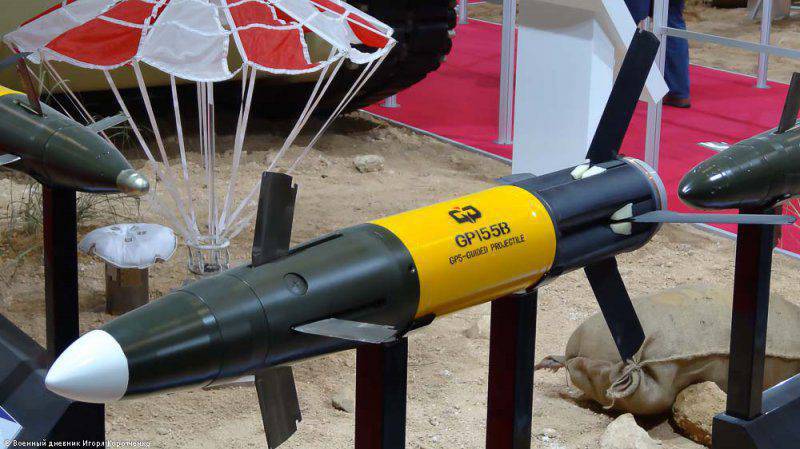
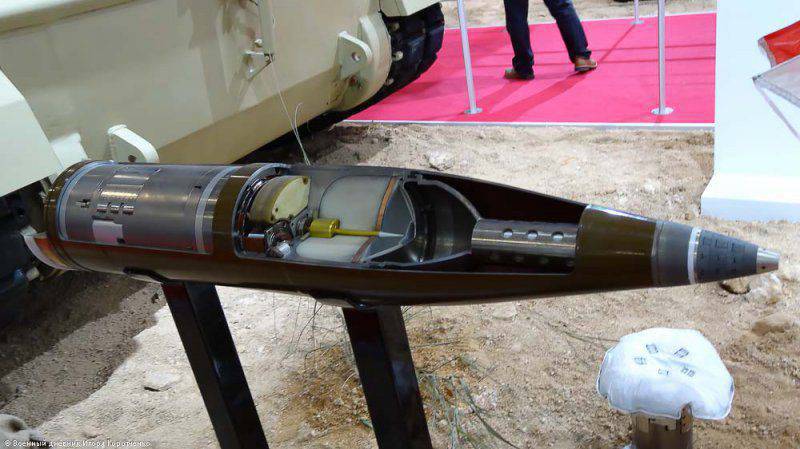
Norinco GP155B laser-guided munition is based on the Russian Krasnopol shell and has a range from 6 to 25 km
ATK's Precision Guidance Kit is mounted on two different types of ammunition, an 105-mm artillery shell (left) and an 120-mm mortar mine (right)
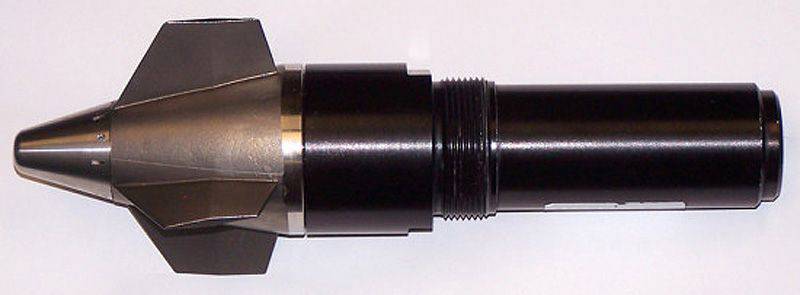
The photo clearly shows the elongated shape of the rear part of the PGK high-precision guidance system, which is compatible only with projectiles that have a deep fuse socket.
The course correction system Spacido, developed by Nexter, a French company, cannot be called a pure guidance system, although it significantly reduces dispersion in range, which usually far exceeds lateral dispersion. The system was developed in collaboration with Junghans T2M. Spacido is installed instead of the fuse because it has its own fuse. When mounted on a high-explosive fragmentation ammunition, Spacido is equipped with a multimode fuse with four modes: preset time, shock, delayed, remote. When mounted on cluster munitions, the Spacido fuse only works in the preset time mode. After the shot, the tracking radar installed on the weapons platform monitors the first 8-10 seconds of flight, determines the velocity of the projectile, and sends the radio frequency coded signal to the Spacido system. This signal contains the time after which the three Spacido disks begin to rotate, thereby ensuring that the projectile arrives precisely (or almost exactly) on the target. The system is currently at the final stage of development, and Nexter has finally found a shooting range in Sweden to conduct tests with the highest possible ranges (in Europe it is very difficult to find a shooting range with a long range directrix). By the end of the year it is planned to complete the qualification tests there.
Some time ago, a very similar system was developed by the Serbian company Yugimport, but its development was stopped pending funding by the Serbian Ministry of Defense.
Nexter's Spacido Course Correction System
Raytheon Epiafs fuses installer allows you to program various time fuses, such as M762 / M762A1, M767 / M767A1 and M782 Multi Option Fuze, as well as the PGK guidance kit and the M982 Excalibur guided projectile
... and traditional ammunition
New developments have touched not only guided munitions. The Norwegian Army and the Norwegian Logistics Administration signed a contract with Nammo to develop an entirely new family of 155-mm insensitive munitions. High Explosive-Extended Range (High Explosive-Extended Range) developed only by Nammo. Before loading, either a bottom gas generator or a bottom notch can be installed into it, respectively, when firing from the 52 caliber barrel, the range is 40 or 30 km. The warhead is equipped with 10 kg of the cast low sensitive explosive MCX6100 IM from Chemring Nobel, and the fragments are optimized for hitting machines with homogeneous armor 10 mm thick. The Norwegian army plans to get a projectile, which by its effects at least partially coincided with the currently prohibited combat elements of cluster munitions. Currently, the projectile undergoes the qualification process, the initial batch is expected in the middle of 2016, and the first serial deliveries at the end of that year.
The Nexter Spacido system can significantly reduce dispersion in range, which is one of the main causes of inaccuracy of artillery fire.
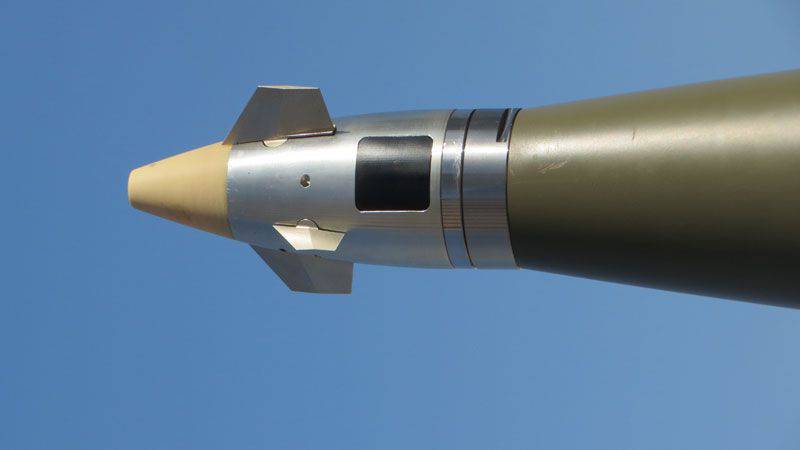
BAE Systems is developing the Silver Bullet precision guidance kit, which will be available in two years.
The second product is a long-range lighting projectile (Illuminating-Extended Range), developed in conjunction with BAE Systems Bofors. In fact, two types of projectile are being developed using Mira technology, one of white light (in the visible spectrum), and the second of infrared illumination. The shell unfolds at an altitude of 350-400 meters (fewer problems with clouds and wind), instantly flashes and burns with constant intensity, at the end of burning a sharp cut-off occurs. The burning time with the white light option is 60 seconds, while the low burning rate of the infrared composition allows you to light up the 90 area for seconds. These two projectiles in ballistics are very similar. Qualification should be completed in July 2017 of the year, and serial deliveries are expected in July 2018 of the year. The smoke projectile, also being developed with the participation of BAE Systems, will appear half a year later. It contains three containers filled with red phosphorus, while Nammo is looking to replace it with a more effective substance. After leaving the shell of the shell, the containers reveal six petal brakes with several functions: they limit the speed at which they hit the ground, work like aerodynamic brakes, ensure that the burning surface always remains at the top, and finally ensure that the container does not penetrate deep into snow, and this is important for the northern countries. Last but not least, the projectile is practical with an extended range (Training Practice-Extended Range); It has a HE-ER high-explosive fragmentation timing and is being developed in unmanaged and sighting configurations. A new family of ammunition qualifies for firing a howitzer M109A3, but the company also plans to shoot them from the Swedish Sau archer. Nammo is also negotiating with Finland about the possibility of firing a 155 K98 howitzer and hoping to test their shells with a PzH 2000 howitzer.
Rheinmetall Denel is close to delivering the first production batch of its low-sensitivity high-explosive fragmentation ammunition M0121, which it intends to deliver in 2015, an unnamed NATO country. The same customer will then receive an upgraded version of the M0121, which will differ in a deep fuse socket, which will allow you to install fuses with a trajectory correction or a PGK kit from an ATK that is longer than standard fuses. According to Rheimetall, the Assegai family of ammunition, which is expected to qualify in 2017, will be the first family of 155-mm ammunition that are specifically designed for 52 caliber guns that qualify for the NATO standard. This family includes the following types of projectiles: high-explosive, illuminating in the visible and infrared spectra, flue with red phosphorus; they all have the same ballistic characteristics and interchangeable bottom gas generator and a tapering tail section.
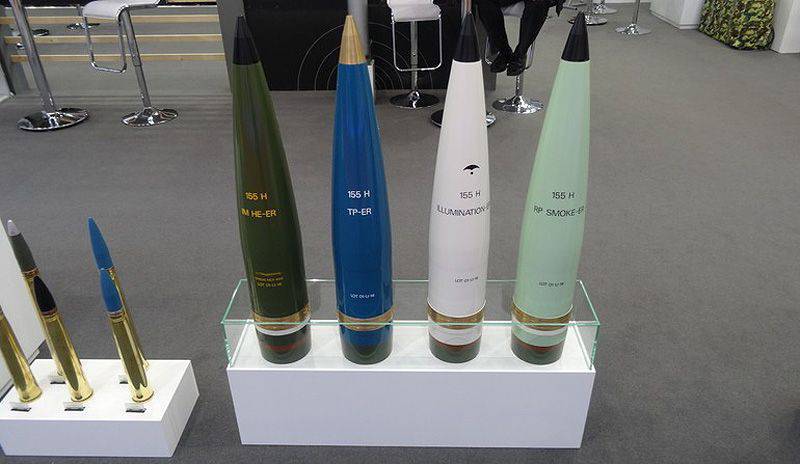
The company Nammo specifically for 52 caliber guns has developed a whole family of 155-mm insensitive munitions, which will appear in the army in 2016-2018 years
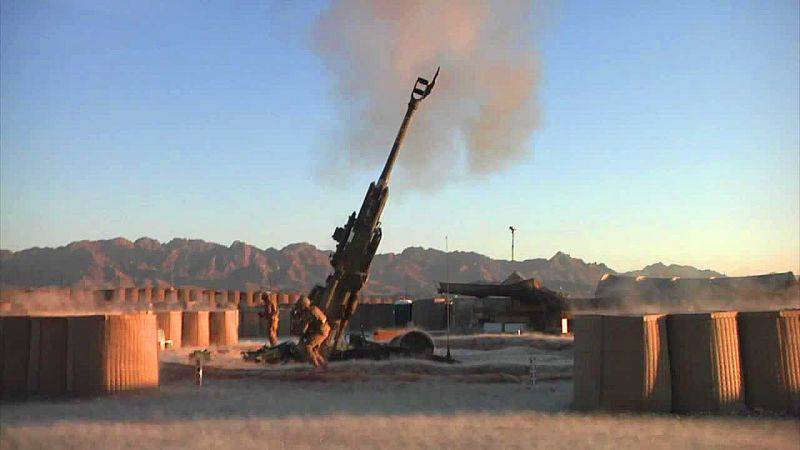
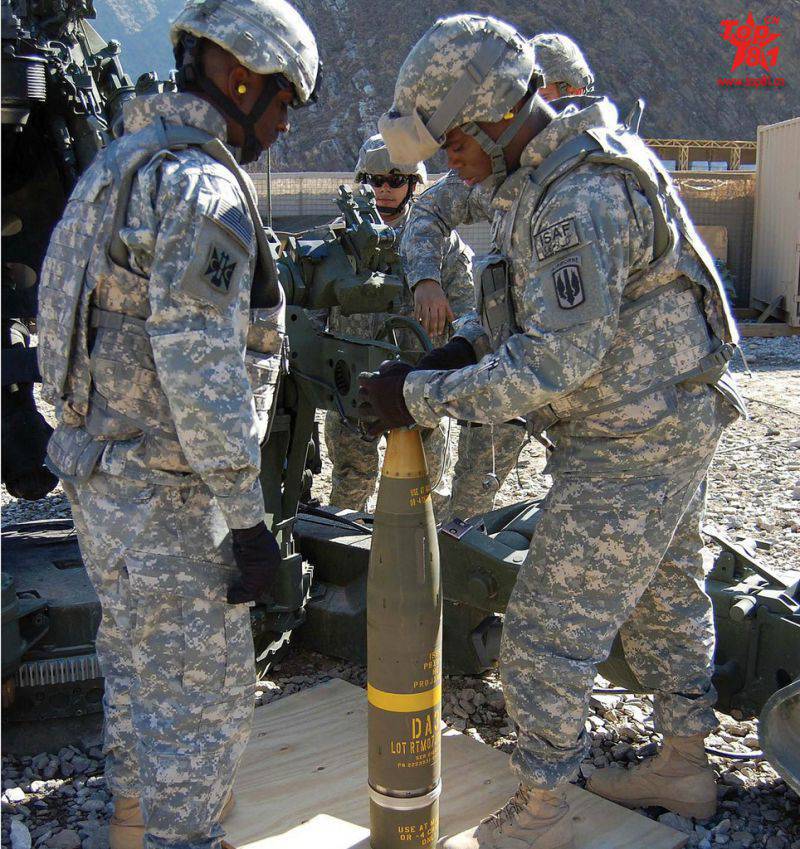

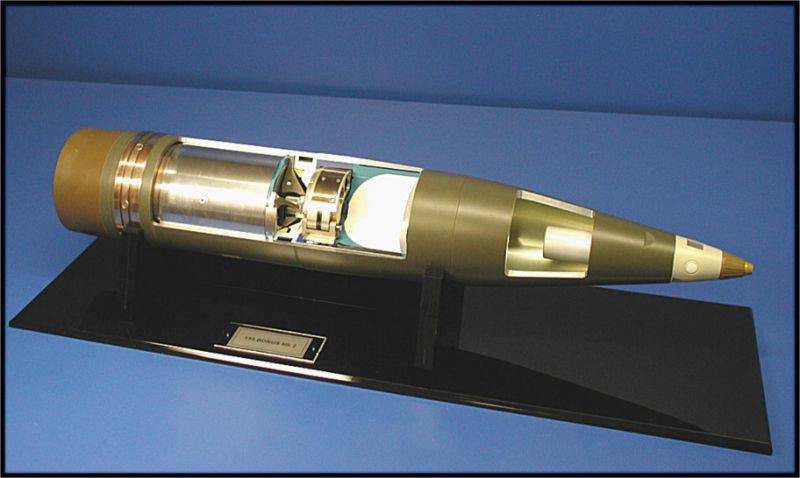
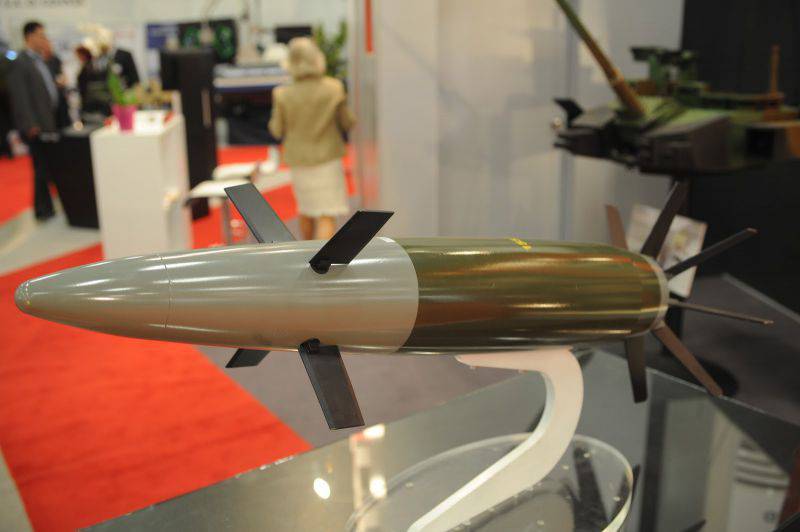
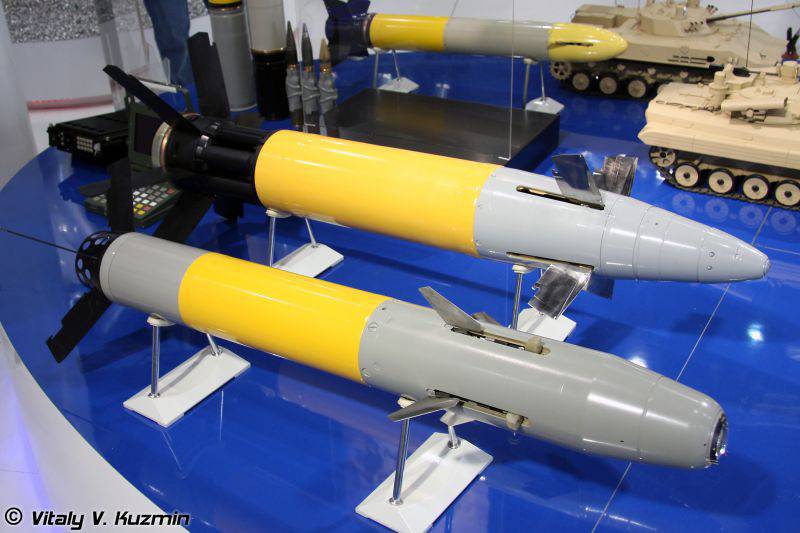
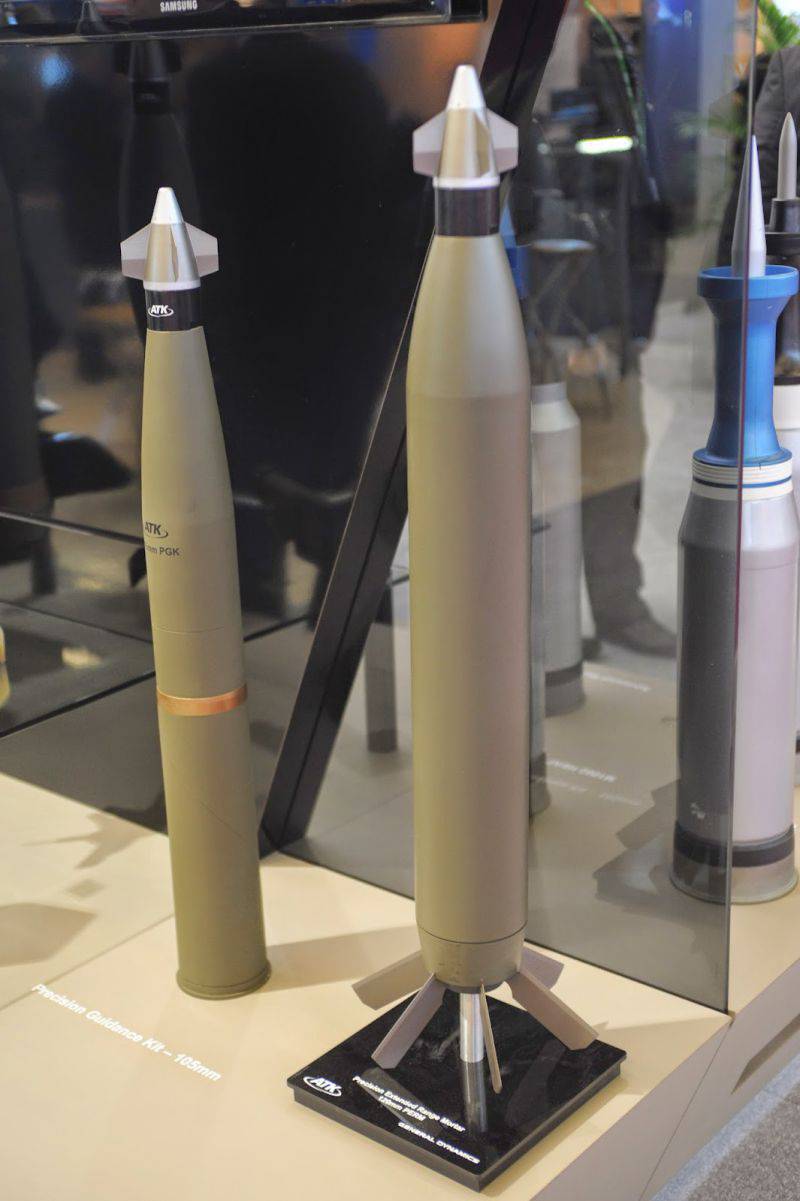
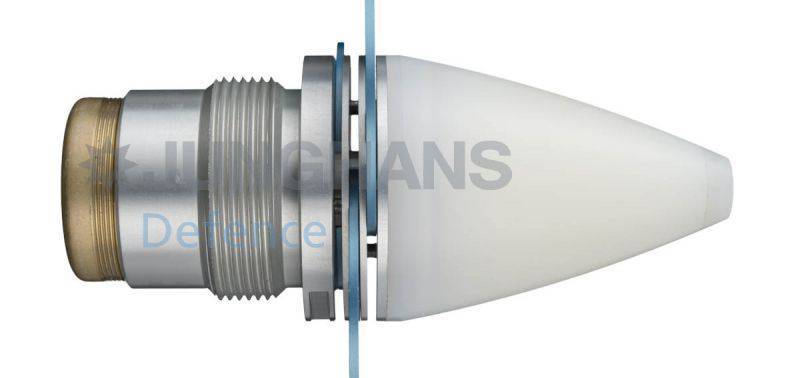
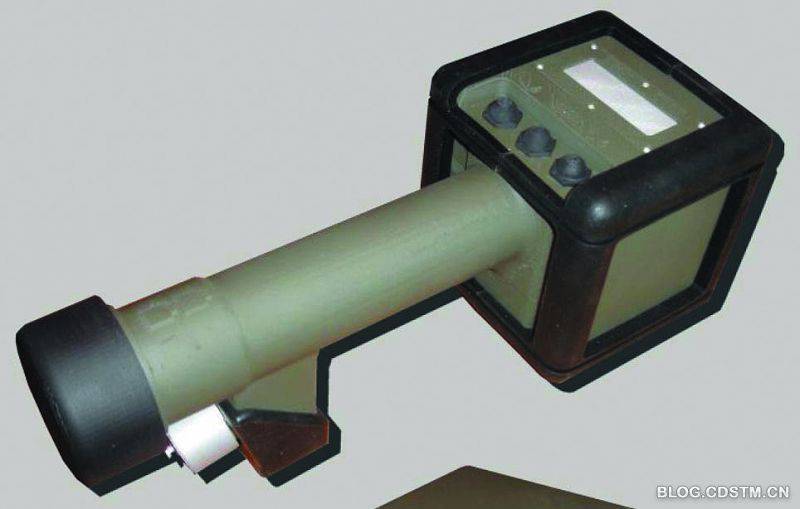
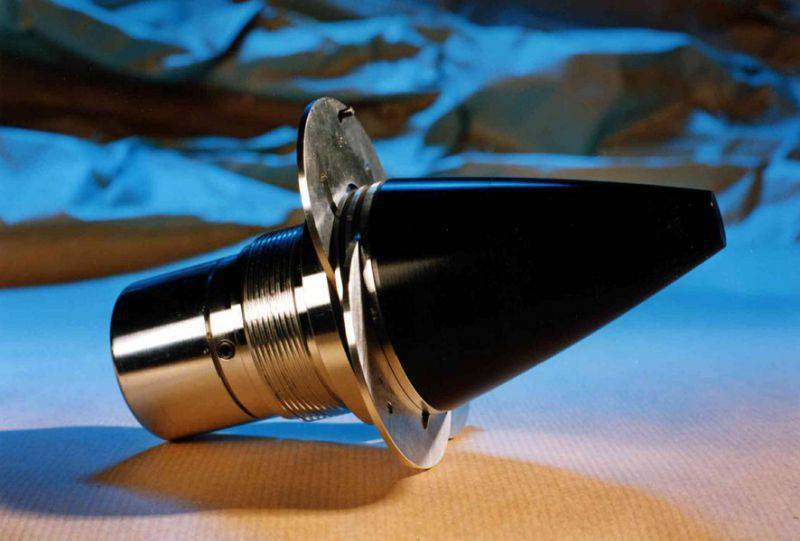
Information